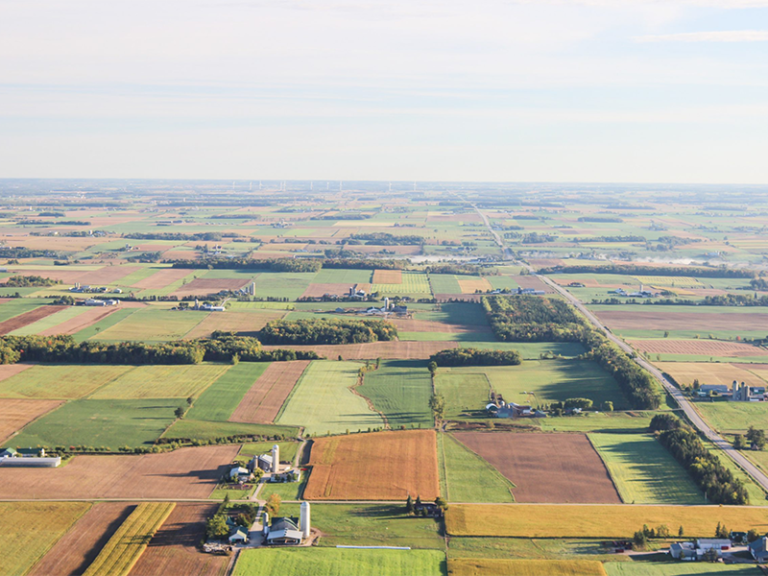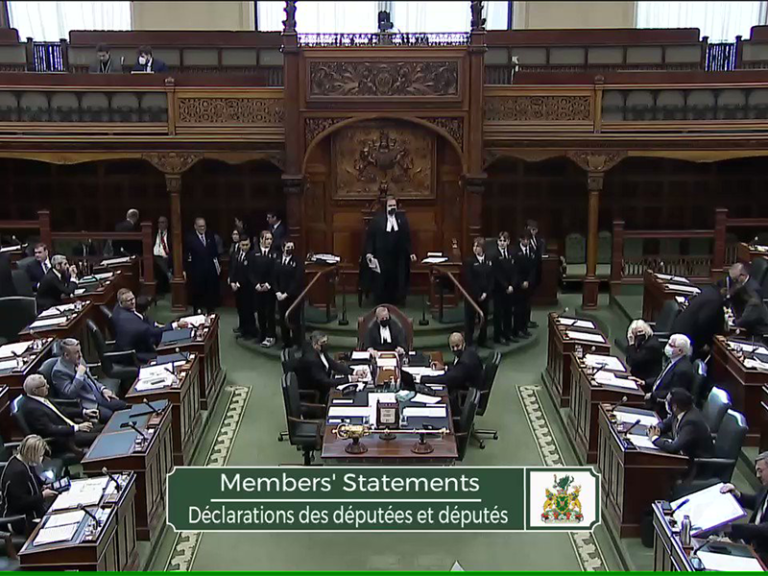First published: November 12, 2004
by Keith Oliver
The basic argument of these articles.
Throughout these articles the argument has been made that we need to change
the way we grow and develop human settlements. The failure of past land-use
practices is represented by unsustainable trends which include increasing
property taxes and traffic congestion, and our total dependency on the
private automobile.
In future, the argument goes, we must use land more efficiently and achieve
a more compact urban form. The benefits of doing so include: preserving
valuable agricultural lands; having more land to set aside to protect
important environmental features and systems; having more land to devote to
high quality public and recreational use; creating a base for attractive,
efficient and affordable public transit as an alternative to the private
automobile; and reducing the cost of installing, maintaining and replacing
municipal services.
If properly planned in general, and designed in detail including the
development of new forms of housing, a community that achieves a more
compact urban form will be a better place to live, work and raise a family.
Instead of development eroding Cobourg’s small town values, they will be
preserved and enhanced.
The Secondary Land-Use Plan, which is the first step in the planning of the
development of Area C, will be presented to the public before November.
Hopefully Planning Coordinator Councillor Dean McCaughey, the rest of the
Cobourg Town Council, our local Planning Department and the Consultants,
will create a plan that will result in a type of growth that is suitable to
our small town, maintain is historical identity and values and result in a
more compact future urban form.
The need to change the Official Plan for the existing town.
Article three in this series looked at how the development of Area C could
and should affect the rest of the Town. The old and the new are integral to
each other. This is especially true since the ability of a town to provide
certain services to its residents is dependant on the size of its
population and one of those services is good public transit.
In 30 years, when Area C is built out and our town is twice its present
population of 17,000, Cobourg will have the minimum population needed to
create an attractive, efficient and affordable public transit system. In
addition to a minimum population the land-uses must be transit-supportive.
They must be organized into transit-destinations where appropriate, with
higher dwelling and job densities that must result in at least 90% of
residents and workers being within an easy 400 metre walk of a bus stop.
The planning for this must start now.
With a fresh start this could be relatively easy to accomplish in Area C,
but what about the existing town which is presently not transit-supportive?
The opportunity to address this will come in 2006 when Cobourg’s Official
Plan (OP) comes up for its mandatory five-year review. The challenges will
be for the OP to encourage and direct infill, intensification, and the
strengthening of transit destinations. Some of this will have to be
accomplished through redevelopment.
When redevelopment becomes practical.
The prospect of redevelopment, which often includes the demolition of
perfectly good buildings, seems at first glance to make little sense, or to
be prohibitively expensive. The one factor that makes sense out of the
redevelopment exercise is the value of land as a percentage of the value of
a whole property. Traditionally the value of the land is about 30% of the
value of a property. Maintaining this favorable ratio is the greatest
single motivating factor for developers when they built on cheap land at
the outer edges of a town or city. This unbalanced competitive advantage
over the cost of properties at the centre of settlements is one reason why
the centre is often in a state of decay or abandonment.
When land and properties are in demand their price increases. With
construction costs relatively stable in any one period, the real increase
is rightly attributed to an increase in the value of the land. When the
value of the land increases to 60% or more of the value of a property and
the development charges are reduced because services are already in place,
redevelopment becomes economically viable. A town council can encourage
redevelopment by offering to reduce development charges. The argument in
favour of doing so is that redevelopment in a built area causes only
insignificant increases in the cost of existing fire and police services,
or libraries, water and sewer services, roads and sidewalks, fibre optic
cable services, schools, etc.
The Oaklands project addresses many issues.
One successful redevelopment project is at the corner of Avenue Road and
Cottingham, just north of Dupont Street in Toronto. The 1977 Oaklands
Project by DuBois and Plumb, Architects, resulted in half the existing
single and semi-detached houses being demolished, and eight townhouses and
a six storey apartment and office building being constructed in their
place. The result was office space accessible from Avenue Road for 80
employees and twice the number of dwellings, by which the site achieved
transit-supportive densities.
A unique feature of the apartment building is that most of the entrances
to the units are reached along an atrium corridor that is open to the sky
and in which small trees are growing. The success of the corridor as a
street or public space is attested to by the fact that neighbours can often
be found there, engaged in casual conversation. The kitchens of some
apartments have windows that open onto the corridor and each apartment has
a generous private balcony that others cannot see into. At the centre of
the site there is a public green space and all parking is under the building.
While serving as an example of the successes possible through
redevelopment, intensification and the more efficient use of land, Oalkands
is also an example of a successful mix of the old and the new, residential
and business uses, and four different housing types, all on the same small
site. It is one of the most sought after residential addresses in Toronto.
Note: Part 12


